Floating Terminals
Floating Terminals
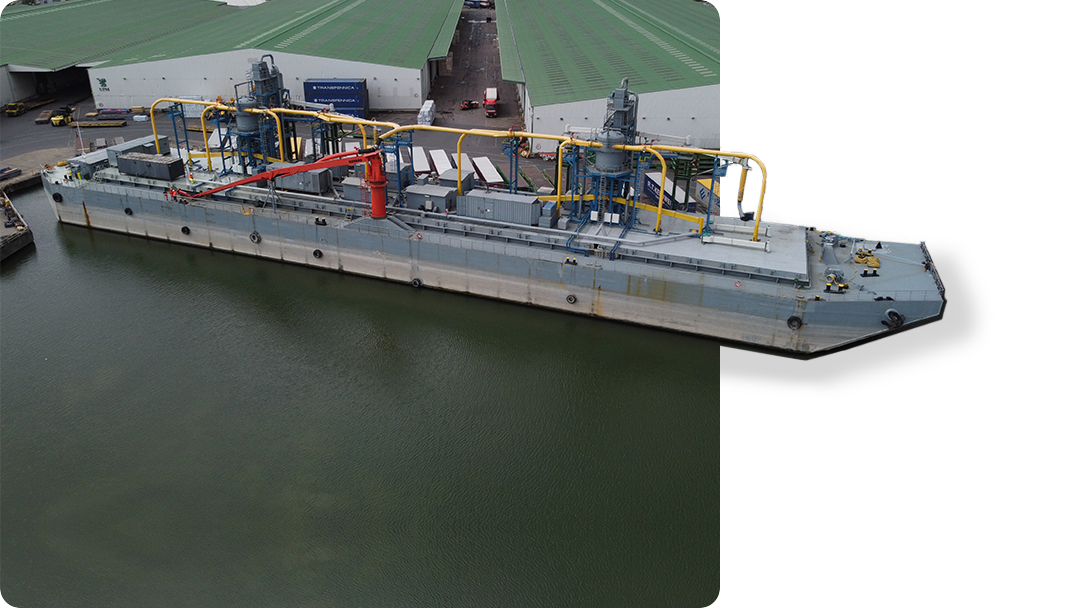
Floating terminals
A floating terminal can be used as a temporary facility for a large construction project or a permanent facility for terminals with insufficient space on land. One of the unique characteristics of a floating terminal is the capability to be stationed up to 200 meters offshore and pumping the cement or fly ash to shore via a floating pipeline. Therefore, the terminal does not need any dock. Another characteristic of a floating terminal is to act as extra storage for loading ships, bagging plants or even bulk trucks on the dock.
The following configurations are available for floating terminals:
Click on a blue link to jump to your preferred section.
System Configurations
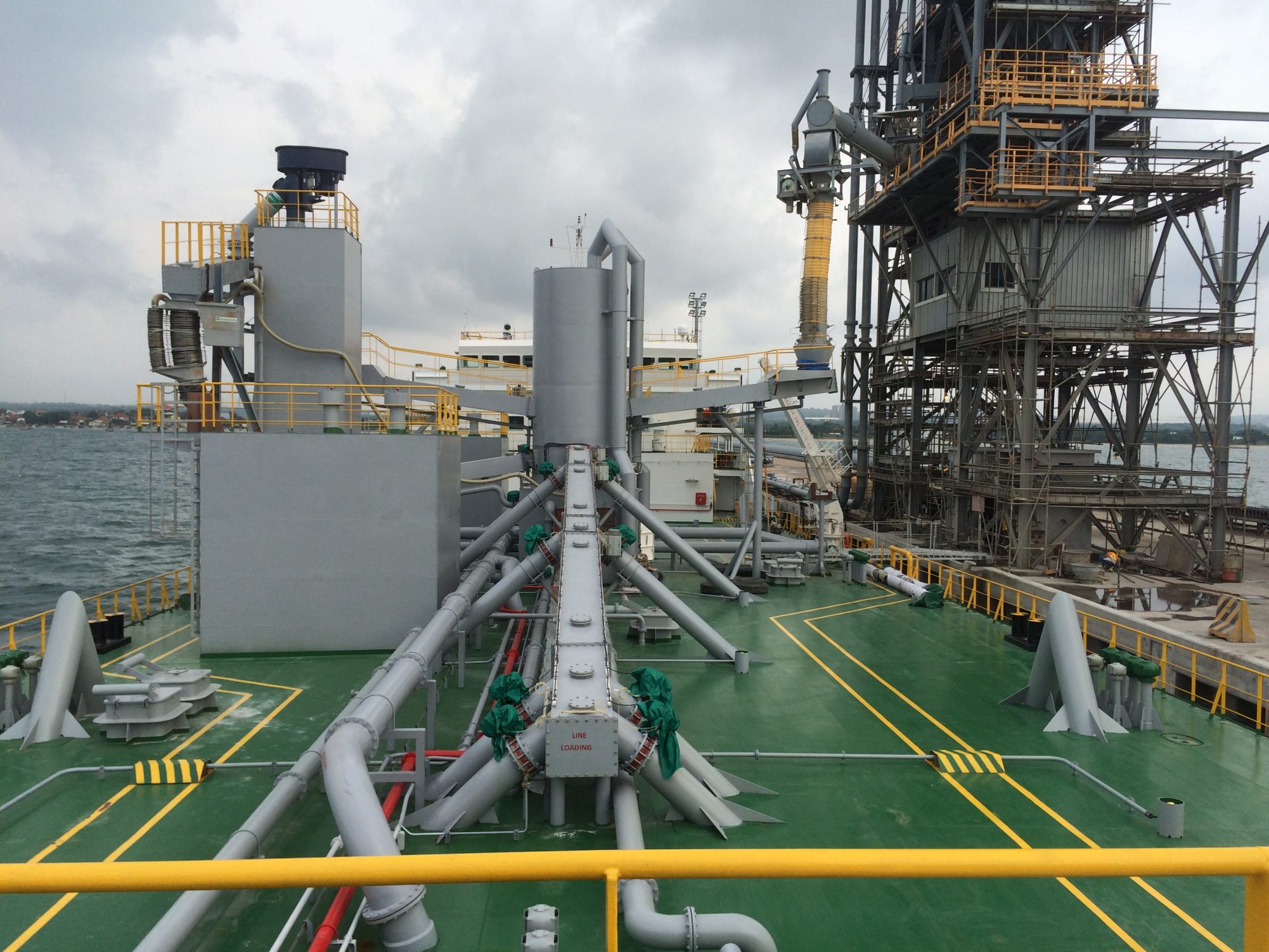
Airslide Loading system
Floating terminal
Airslide loading systems use a slope that harnesses gravity to convey fine powders. This is achieved by forcing air through a porous fabric for the required fluidisation. The steel-structure boxed frames & housings, abrasion-resistant polyester fabric, and high-quality blowers combine to form rugged and versatile loaders to handle materials like cement, alumina, and hydrated lime, fly ash and plastic powders. Additionally, air-slide-based loaders are fully enclosed and self-cleaning and have no moving parts. This means they are quiet, dust-free and require almost no maintenance.
Material is loaded for transport pneumatically or mechanically. The central loading point with air slides, fitted with valves and drop-off pipes, distributes the dry material over the holds.
KEY BENEFITS
-
Gravity loading
-
Low Energy consumption
-
Easy to operate
-
Central Loading point
-
No weather delays
TECHNICAL DETAILS
Max. Vessel Size: Up to 40.000 DWT
Max. Convey Capacity: Up to 1.500 TPH
Project: New build or Conversion
Max. Vessel Size:
Up to 7.000 DWT
Max. Convey Capacity:
Up to 205 TPH
Project:
New build or Conversion
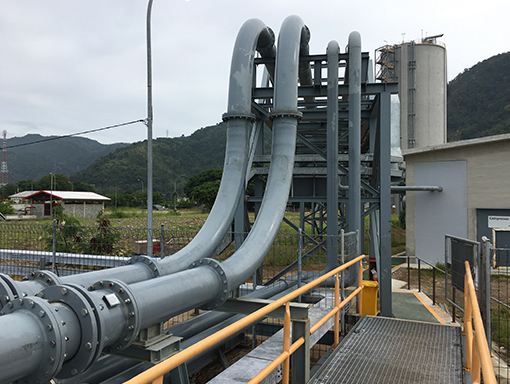
Pipeline Loading system
Floating terminal
The pneumatic loading principle is utilized when a ship is loaded through a pipeline system. In this case, the cement is transported via a pneumatic conveying system all the way to the ship through a pipeline. A flexible rubber hose connects the pipeline onshore with the ship’s onboard pipeline.
KEY BENEFITS
- Loading by pressure through pipe and hose connection
- No on-board energy consumption
- Easy to operate
- No weather delays
- Adapted to shallow rivers and estuaries
TECHNICAL DETAILS
Max. Vessel Size: Up to 10.000 DWT
Max. Convey Capacity: Up to 500 TPH
Project: New build or Conversion
Up to 10.000 DWT
Max. Convey Capacity:
Up to 500 TPH
Project:
New build or Conversion
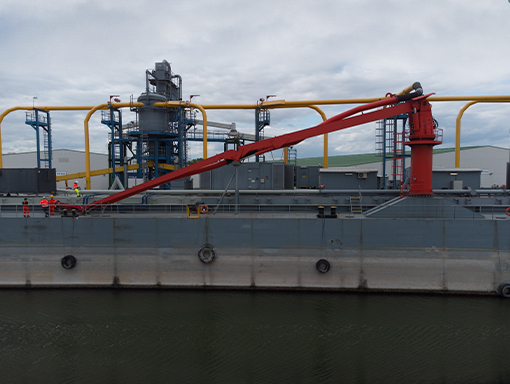
mounted ship unloader
Floating terminal
A floating terminal mounted ship unloader is ideal for unloading open top ships or barges into the floating terminal. Large tidal differences do not influence the length of the suction arm, as the terminal and bulk carrier are both floating.
KEY BENEFITS
-
Operations possible with Large tidal differences.
-
Unloading Open top ships and barges
TECHNICAL DETAILS
Max. Vessel Size: Up to 15.000 DWT
Max. Convey Capacity: Up to 360 TPH
Project: New build or Conversion
Up to 15.000 DWT
Max. Convey Capacity:
Up to 360 TPH
Project:
New build or Conversion
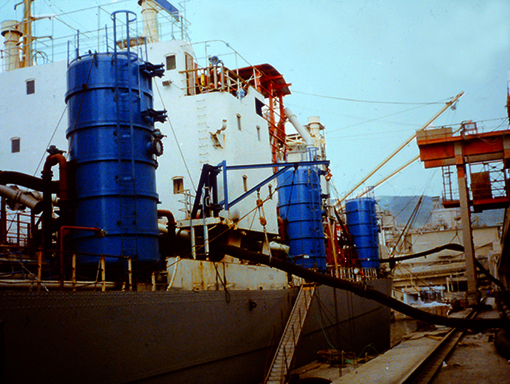
terminal-to-silo conveying
Floating terminal
Terminal-to-Silo Conveying uses a completely closed bulk handling unloading system, like a Double Re-Loader system. This unloading system is integrated into the floating terminals hull and uses a vacuum and pressure to convey the dry bulk material into the silo directly. Our Floating Terminal solutions are included with a Fluidization floor for unloading the cargo from the holds in every weather condition.
KEY BENEFITS
-
Operations possible with Large tidal differences.
-
Highly reliable pneumatic system
-
Fully automated
-
No weather delays
-
Continuous material flow
-
Flexible re-loader arrangement above or below deck
TECHNICAL DETAILS
Max. Vessel Size: Up to 40.000 DWT
Max. Convey Capacity: Up to 1.000 TPH
Project: New build or Conversion
Up to 40.000 DWT
Max. Convey Capacity:
Up to 1.000 TPH
Project:
New build or Conversion
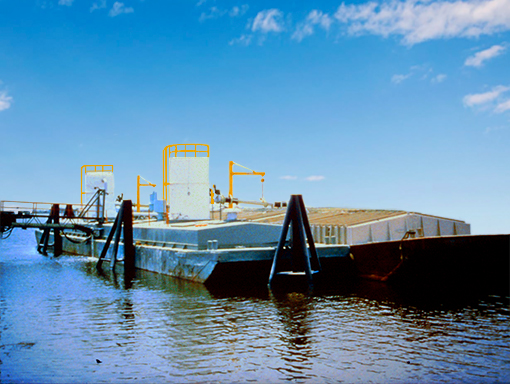
terminal-to-ship conveying
Floating terminal
A Floating Terminal can be used as a permanent dock storage facility for dry bulk materials when the shore does not have enough space or suitable storage facilities available. But a floating Terminal can also be used as a loading station on the open sea for loading (smaller) ships for supplying inland storage locations.
A specially designed ship loading bellows for gravity loading or pipeline loading system can be installed for loading ships from the floating terminal. Both solutions use a vacuum to retrieve the dry bulk material from the cargo holds.
KEY BENEFITS
-
Operations possible with Large tidal differences.
-
Both open top or closed top ships or barges possible
-
Automated
-
Continuous material flow
TECHNICAL DETAILS
Max. Vessel Size: Up to 10.000 DWT
Max. Convey Capacity: Up to 500 TPH
Project: New build or Conversion
Up to 10.000 DWT
Max. Convey Capacity:
Up to 500 TPH
Project:
New build or Conversion
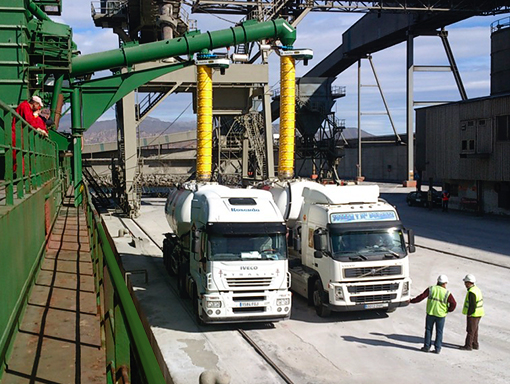
terminal-to-truck conveying
Floating terminal
When a Floating Terminal is used as a permanent dock storage facility for dry bulk materials and no storage facilities are not available, Terminal-to-truck conveying is an excellent solution. Terminal-to-truck solutions use the continuous suction pump solution, which uses only a vacuum and the CSP-pump to convey the dry bulk material from the Floating terminal towards the bulk trucks on the dock site.
KEY BENEFITS
-
Direct truck loading
-
Operations possible with Large tidal differences.
-
Multiple terminals with unloading operations
-
Low energy consumption
-
Automated
-
Continuous material flow
TECHNICAL DETAILS
Max. Vessel Size: Up to 20.000 DWT
Max. Convey Capacity: Up to 200 TPH
Project: New build or Conversion
Up to 20.000 DWT
Max. Convey Capacity:
Up to 200 TPH
Project:
New build or Conversion


